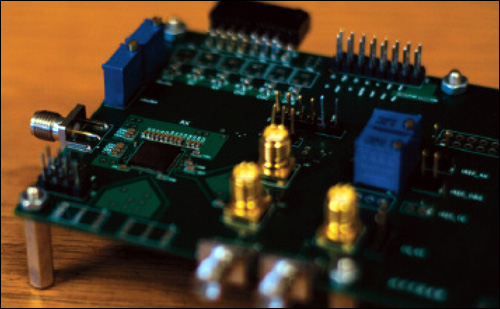After Hurricane Sandy ravaged the northeast in October 2012, many businesses and residents in Connecticut, New Jersey and New York were without power for days or weeks. Part of the problem: The recovery crews searching for access to underground electrical switches and other equipment were hampered by the fact that streets near the shore were buried under mounds of sand and detritus from destroyed stores and homes.
Research being conducted at the Geospatial Research and Applications Center (GRAC) at Auburn University, in Alabama, suggests that a combination of GPS, radio frequency identification and magnetic locators could greatly reduce the amount of time required to find manhole covers, junction boxes, fire hydrants and other gear and utilities after a storm.
“About four years ago, we received a grant from the Economic Development Administration to mark assets near the beaches in the Gulf region, so they could be found after a storm,” says Chetan S. Sankar, a professor at Auburn and founder of the GRAC. “We sent about 100 students to the region and recorded the GPS coordinates for some 12,000 elements.”
But when a team from the GRAC returned to the Gulf to find the objects using GPS coordinates, locating them took a lot of time, even when there was no storm debris covering them. “GPS is just not accurate enough for practical purposes for locating buried elements,” Sankar says.
An executive at Berntsen International, a Madison, Wis., manufacturer and supplier of aboveground, visible survey markers, read an article about the GRAC’s work in the Gulf and contacted Sankar. Berntsen had created the InfraMarker, a rugged passive RFID tag capped with a magnet. The InfraMarker RFID System uses a magnetic locator to find an underground asset and an RFID reader to identify the asset. In 2011, the Village of Thiensville, in Madison, Wis., began using the markers to track its force main sewer line (see RFID Helps Prevent Sewer Disasters). Berntsen wanted to see if its system could find buried assets faster.
Sankar’s team conducted an experiment last fall in which it simulated a disaster-recovery situation, and sent students to find some assets with GPS alone, with just RFID and the magnetic locator, and with GPS, RFID and the magnetic locator together. “We found that combining GPS and RFID and the magnetic locator is the best way to go,” Sankar says. “Within the time allotted, students located 91 percent of the targets using the combined technologies, 39 percent of the targets using RFID and magnetic locator technology alone, and only 19 percent of the targets using GPS alone.”
This summer, the GRAC team is working with Riviera Utilities, in Alabama, to bury 50 infrastructure elements tagged with InfraMarkers. In the fall, teams of students will test whether the elements can be found more quickly with GPS alone or with GPS and the InfraMarkers. The teams will use Trimble handheld devices to read GPS data and Android phones equipped with RFID readers to check data from the InfraMarkers. Sankar expects the results to provide information on which combination of technologies works best to identify the elements fast and effectively.
Sankar’s hope is that utilities around the country will take notice of the research and consider using RFID to identify critical infrastructure and assets. That way, the next time a storm as powerful as Sandy hits, utilities can get back up and running more quickly.


